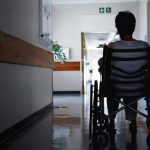The Worst Places in America
 Numerous social commentators have noted how the pandemic has hit the least powerful and prosperous parts of the population the hardest. Infections, hospitalizations, and deaths have been disproportionally high among the poor, people of color, recent immigrants, Native Americans, and the elderly.
Numerous social commentators have noted how the pandemic has hit the least powerful and prosperous parts of the population the hardest. Infections, hospitalizations, and deaths have been disproportionally high among the poor, people of color, recent immigrants, Native Americans, and the elderly.
The pandemic has also underscored the worst places to work and live, with the pejorative “worst” referring to the way certain places weigh heavily on the body, mind, and spirit. These places are not only individualized but also organized into types and categories. I nominate three types of places as the worst in the United States: prisons, nursing homes, and food processing plants.
Media accounts have reported at length on how COVID-19 has ravaged prison populations, but prisons were undesirable places long before the virus arrived. The nation has in general abandoned any commitment to rehabilitate inmates, and prisons have deteriorated into demeaning, dangerous warehouses. Diseases and medical problems are four to ten times as common as they are in the general population, and the Prison Policy Initiative and Wisconsin Department of Corrections estimate that 42% of the state’s inmates suffer from one or more mental illnesses. According to the prominent sociologist Jonathan Simon, most of the nation considers prison inmates to be “toxic waste” of a human variety and thinks of the people who run the prisons as engaged in “waste management.”
Nursing homes have been the places in which 40% of COVID-19 fatalities have occurred, and some of the most excruciating pandemic scenes have involved distraught friends and relatives saying goodbye to confused and dying residents through tightly-sealed windows.

 Last year, I watched as a law student was introduced to a lawyer volunteering at the legal clinic. The lawyer was a white man in his 60s. The student was a woman of color in her 20s, and she was wearing hijab. I happen to know that both people have hearts of gold and come to the legal clinic with a desire to help and to give their time and talents selflessly.
Last year, I watched as a law student was introduced to a lawyer volunteering at the legal clinic. The lawyer was a white man in his 60s. The student was a woman of color in her 20s, and she was wearing hijab. I happen to know that both people have hearts of gold and come to the legal clinic with a desire to help and to give their time and talents selflessly. She stood, at best, five feet, one inch tall. But as she got older, she looked shorter—age and frailty bending her small frame forward.
She stood, at best, five feet, one inch tall. But as she got older, she looked shorter—age and frailty bending her small frame forward.